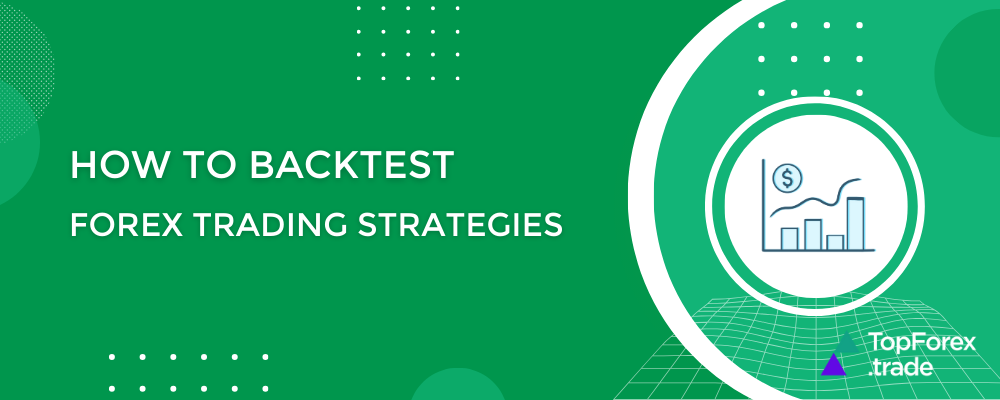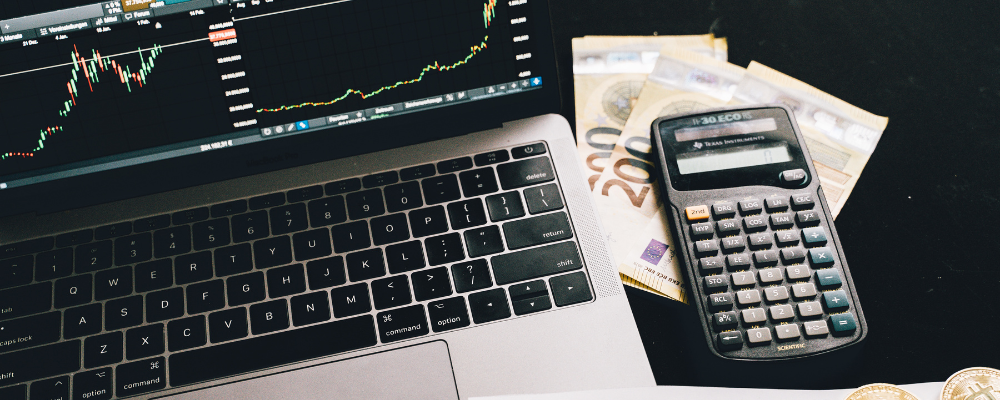How to backtest Forex trading strategies: a step-by-step guide

Backtesting is a crucial step in refining your Forex trading strategy before putting real money on the line. It allows traders to analyze historical data, test different setups, and optimize their approach—without the risk of losing capital. In this guide, we’ll break down how to effectively backtest Forex strategies using different tools and techniques, helping you gain confidence in your trades before entering the live market.
What is backtesting in Forex trading?

Backtesting is the process of evaluating a trading strategy by applying it to historical market data to determine how it would have performed in past conditions. It allows traders to:
- Identify potential weaknesses before live trading
- Optimize entry and exit points
- Test different risk management techniques
- Gain confidence in their strategy
By running a backtest, you can understand a strategy’s win rate, profitability, drawdowns, and risk-to-reward ratio, helping you refine your approach before risking real capital.
How to backtest a Forex trading strategy
Step 1: Define your trading strategy
Before testing, you need a structured trading plan. Clearly define:
✅ Trading rules: Entry and exit conditions (e.g., Buy when RSI < 30, sell when RSI > 70)
✅ Indicators: MACD, EMA, Bollinger Bands, Fibonacci retracements, etc.
✅ Timeframe: Short-term (M1, M5, M15), medium-term (H1, H4), or long-term (D1, W1)
✅ Risk management: Stop-loss, take-profit, and position sizing
▶ More about risk management tools: Forex risk management tools: automatic trading with popular market orders
💡 Pro Tip: Keep it simple. Overcomplicated strategies often fail in live trading.
Step 2: Choose a backtesting tool
Several platforms provide backtesting tools, allowing traders to analyze historical data.
1. TradingView
- Manual backtesting with the “Replay” function
- Great for visual learners testing indicators on historical charts
- No automation, but allows for detailed analysis
- Built-in Strategy Tester for automated backtesting
- Works with Expert Advisors (EAs) for algorithmic strategies
- Offers demo accounts for forward testing
3. Forex Tester
- Standalone software for in-depth backtesting
- Realistic market simulation for hands-on strategy refinement
- Supports automated and manual backtesting
4. Python & QuantConnect
- Best for algorithmic traders who need precise historical tick data
- Customizable scripts for testing complex strategies
💡 Pro Tip: If you’re new, start with TradingView or MT4/MT5 before moving to advanced tools.
Step 3: Run your backtest
Once you have your strategy and tool ready, follow these steps:
1. Load historical data
- Use high-quality data to test your strategy over different market conditions.
- Avoid testing only in strong trends—check ranging and volatile periods, too.
You can access historical data from various sources to test your strategy:
-
Broker platforms: Platforms like MetaTrader, TradingView, and brokers like eToro, XTB, and AvaTrade offer historical data directly or via APIs for different instruments, including forex, stocks, and commodities.
-
Data providers: Free sources like Yahoo Finance, Alpha Vantage, and Investing.com provide downloadable data. For more comprehensive data, you can use paid services like TickData, Barchart, and Quandl, which offer high-quality historical data for strategy testing.
2. Apply your strategy to the data
- Manually or automatically execute trades based on your predefined rules.
- Track entry and exit points, win/loss percentage, and risk-to-reward ratios.
3. Analyze performance metrics
Key factors to assess:
- Total profit/loss – Overall gains or losses over the test period
- Win rate – Percentage of profitable trades
- Max drawdown – Largest drop in capital during the test
- Risk-to-reward ratio – Profit per winning trade vs. loss per losing trade
💡 Pro Tip: A low win rate with a high risk-to-reward ratio can still be profitable, while a high win rate with small gains and big losses is dangerous.
Step 4: Optimize your strategy
Once you’ve completed a backtest, refine your approach by:
- Adjusting indicator settings (e.g., changing EMA periods from 50 to 100)
- Tuning stop-loss/take-profit levels to balance risk vs. reward
- Testing different timeframes (some strategies work better on H1 than M15)
🚨 Beware of Overfitting:
Avoid excessive optimization based only on historical data. A strategy that works perfectly on past data may fail in live markets.
Can you use demo accounts for backtesting?

Yes! While backtesting uses historical data, demo accounts allow forward testing in real-time conditions without risking money.
✅ Why use demo accounts?
- Test your strategy in a live environment
- Experience real-time price action
- Assess execution speed and slippage
✅ Best brokers for demo testing:
- HF Markets (HFM) – Unlimited MT4/MT5 demo accounts
- Exness – Low spreads and excellent execution
- AvaTrade – TradingView support for manual testing
💡 Pro Tip: Backtest first, then use a demo account to see if your strategy works in real time before trading live.
Example of a backtested strategy

Strategy: EMA Crossover on EUR/USD
- Indicators: 50-period EMA & 200-period EMA
- Entry: Buy when 50 EMA crosses above 200 EMA (bullish crossover)
- Exit: Sell when 50 EMA crosses below 200 EMA (bearish crossover)
- Stop-loss: 50 pips below entry
- Take-profit: 100 pips above entry
Backtest results (EUR/USD, 1H Chart, 2 years of data):
- Total trades: 150
- Win rate: 62%
- Max drawdown: -6.5%
- Profit factor: 1.8 (meaning the strategy made $1.80 for every $1 lost)
✅ Conclusion: The strategy was profitable, but performed best in trending markets.
Best Forex brokers for backtesting
Choosing the right broker is crucial when transitioning from backtesting to live trading. Here are some top-rated options:
HF Markets (HFM)
✅ Supports MT4/MT5 with built-in backtesting tools
✅ Tight spreads and fast execution
✅ Offers demo accounts for real-time testing
Exness
✅ Unlimited demo accounts for forward testing
✅ Low-latency order execution
✅ Reliable market data for accurate backtesting
BlackBull Markets
✅ Great for manual and automated backtesting
✅ Excellent spreads for strategy testing
✅ Offers a range of account types, including demo accounts for practice
AvaTrade
✅ Offers TradingView integration for manual backtesting
✅ Access to multiple trading platforms (MT4, MT5, WebTrader)
✅ Excellent educational resources for new traders
XM Group
✅ MT4/MT5 support with a built-in Strategy Tester
✅ Low-latency execution for precise backtesting
✅ Free demo accounts with real market conditions
💡 Pro Tip: Always test your strategy on a demo account with a broker before committing real funds.
Related articles:
How to backtest Forex trading strategies - FAQ
